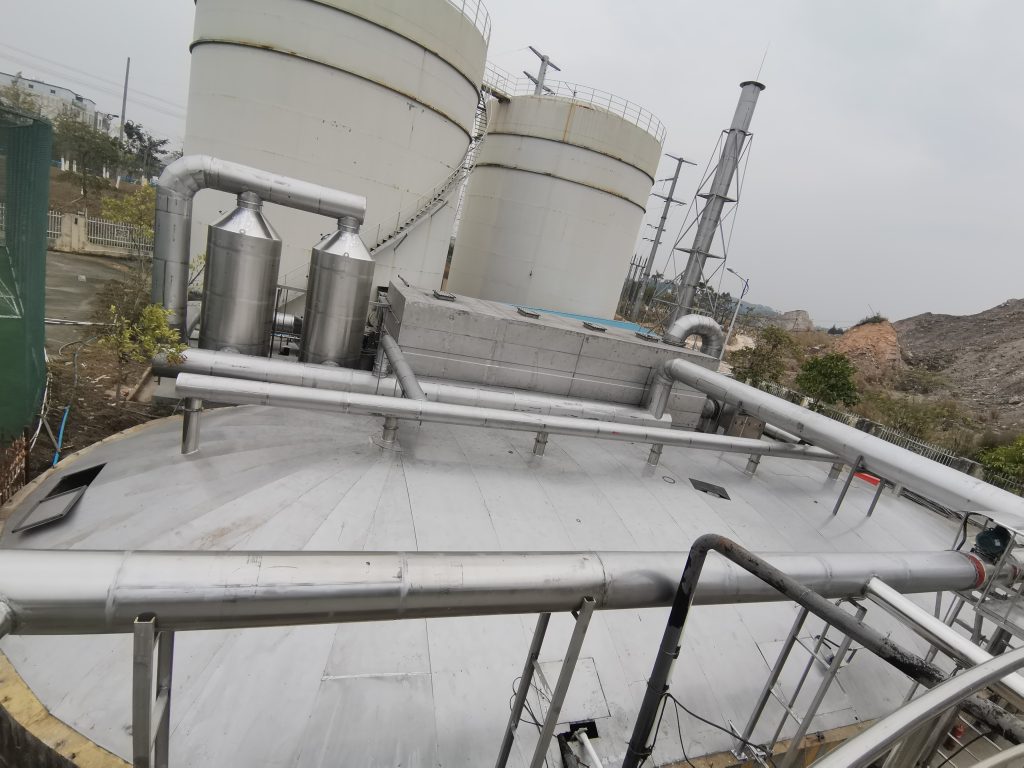What is the biological deodorization system used in STP?
The generation and emission of odorous compounds such as hydrogen sulfide (H2S), ammonia (NH3) and various volatile organic compounds (VOCs) is a common problem in WWTP. Among these, the case of coastal WWTPs in areas with high population seasonality, such as tourist localities, is especially problematic. The deodorization systems of these WWTPs must be capable of working under highly variable operating conditions, because of the increase in the load to be treated during holiday seasons due to higher sewage production and infiltration of marine sulphate.

IEPP®Biological Deodorization System is an easily maintainable odor control system that degrades odor components using microbial processes.
This biological scrubber reduces odor by feeding odorous gas through the packed media, which keeps an optimum environment for microorganisms moisturized with sprinkling water. The system is easy to maintain and saves running costs.
IEPP®Biological Deodorization System uses a unique media that is ideal for retaining a high-density microorganism. When odorous gas makes contact with sprayed water in the system, many of the malodorous components dissolve in the water. The malodorous components dissolved in water are then adsorbed onto the microorganisms inhabiting the media in the scrubber. Simultaneously, some malodorous components are absorbed by the microorganisms directly from gaseous phase. The adsorbed malodorous components are used as an energy source by the microorganisms and for microbial growth. Removed sulfuric compounds and ammonia are oxidized to produce sulfuric acid and nitric acid in the effluent. The effluent usually returns to pumping well at the beginning of the wastewater treatment system for further treatment.

Deodorization systems must not only be effective in removing odor-causing compounds, but also efficient from the point of view of resource consumption. Traditional, physico-chemical, odor-removal technologies usually involve considerable operating costs, and in many cases lead to the production of contaminated media. As an alternative, biological technologies have demonstrated high deodorization efficiencies without consuming drinking water or reagents. The systems described herein can cope with sudden variations in odor loads without suffering loss of efficiency. On the other hand, the economic cost of their operation is minimal.
